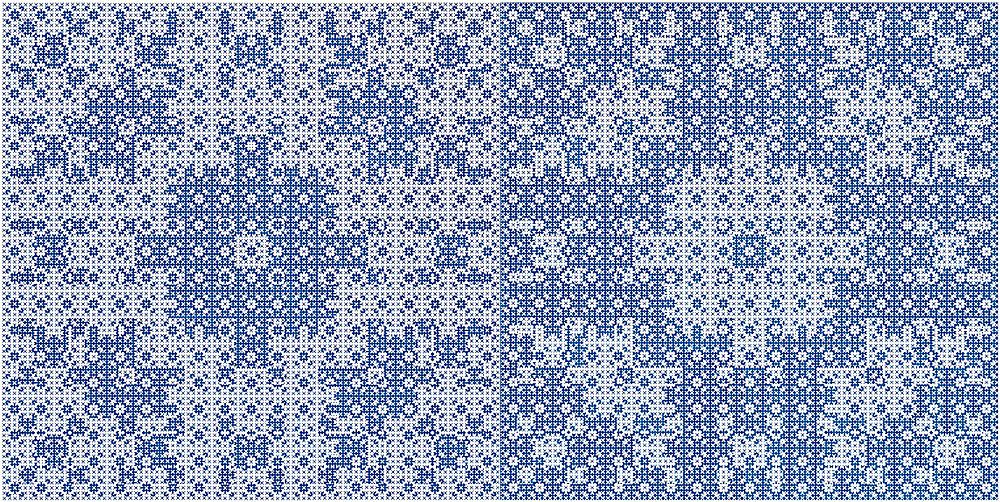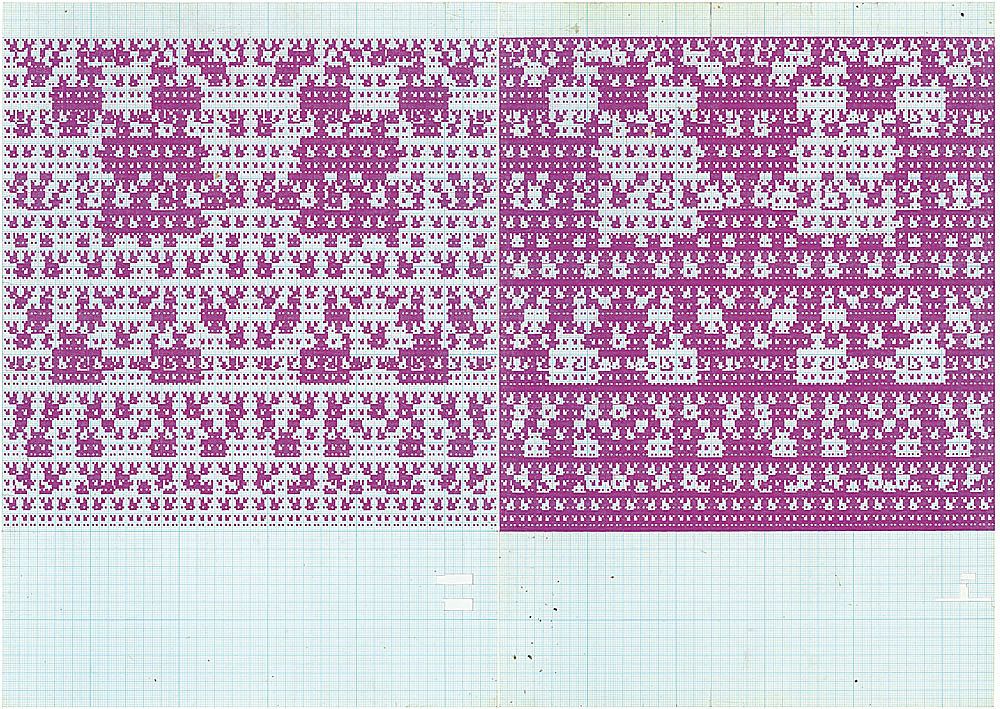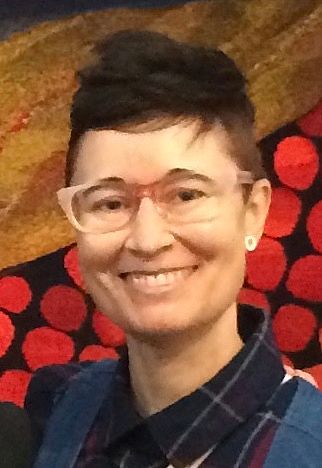One knowledge worker: A review of Martin Thompson's 'Eight Works'
Robyn Maree Pickens considers Martin Thompson's ever-evolving practice.
Robyn Maree Pickens considers Martin Thompson’s ever-evolving practice.
Martin Thompson (b. 1956) is seated with his folder of drawings beside him when I arrive at Brett McDowell Gallery on Dowling Street, Dunedin. I choose to sit cross-legged on the brown floorboards with my arms resting on the small table between us so that I can see his face. Otherwise it would feel like trying to have a conversation on a church pew. Brett checks that Martin and I are okay, then leaves us to talk.
I had read that Martin enjoyed the counterculture films Easy Rider (1969) and Zabriskie Point (1970), but he is quick to correct me. He hasn’t seen Zabriskie Point, “I don’t know where they got that from.” It feels like a wheat and chaff moment: an opportunity to separate fact from fiction. So I ask him if he hung out with James K. Baxter at Hiruharama/Jerusalem on the Whangauni River in the early 1970s. Chaff. Martin was at boarding school in Silverstream, Upper Hutt. But, the association of Baxter and boarding school produces some wheat. Something crystallises. It feels important. Almost as if recalling it for himself, Martin reels off the title of a book that “changed his life.” His beard gets in the way sometimes; I have to ask twice. The book is The Greening of America (1970) by Charles A. Reich. This, according to Martin, is the book that set the course of his life. It made him realise that he’d “never be part of the system,” and “never cut my hair.”
It made him realise that he’d “never be part of the system,” and “never cut my hair.”
A few days later at his opening Eight Works at Brett McDowell Gallery I catch him as he is leaving. I have a copy of The Greening of America in my hand. I read The Greening because I wanted to see if I could find out what makes Martin tick, to see – from what I had gleaned through research and conversation – how this book had influenced his life. There are many passages that I imagine could have been retroactively prescriptive, but this one stands out:
… an individual cannot hope to achieve an independent consciousness unless he [sic] cultivates, by whatever means are available, including clothes, speech mannerisms, illegal activities, and so forth, the feeling of being an outsider.[1]
As a self-described “old hippie,” who emphatically repeats that he will “never be part of the system” or “cut his hair”, Martin appears to embody the fullest expression of the new society Reich was imagining:
Finally, there is the full hippie [who represents] an attempt [to live] life as if the Corporate State did not exist and some new form of community was already here.[2]
While The Greening may be helpful for understanding the formation of Martin’s values, views, and way of life, it is of course a problematic exercise to deploy a book, even a self-declared epiphanic one, as a lens for apprehending an artist’s work. Yet the intersection between artist, book and work remains generative, tempting and elusive.
For those not familiar with Martin’s work, he builds unbelievably intricate and complex geometric patterns using graph paper and ink pens. His unit is the 1mm square. Each unique work is created incrementally from this tiny unit. Each work is a diptych composed of a “positive” and “negative” manifestation, and must always be exhibited side by side, with the positive version on the right hand side. There is no mixing of colours. Each work is Untitled, a monotone in “bright, strong colours.” No pastels, no black. They have been described as resembling quilts, tiles and pixelated screens.[3] The smaller works (100 x 200mm) remind me of 8-bit aesthetics, but the larger works (over 1000mm wide) are as expansive as the star fields of Vija Celmins (b. 1938). In these larger works the combination of pattern complexity, and sheer replication of such miniscule units begin to break retinal and cognitive apprehension.
The drawing began in 1980 when Martin was twenty-four. I knew he had begun a carpentry apprenticeship to become a joiner sometime before 1980, and was curious as to whether, as a result of this apprenticeship, Martin had graph paper to hand: if there was a tangible link between joining timber and joining 1mm squares. There was not. Graph paper was something Martin sought out.
A perfectionist, Martin began using a scalpel and clear tape to fix any mistakes in 1984–5. With the same precision of inking squares and creating mathematically intricate patterns, Martin would cut out replacement squares or sections from the unworked area around the composition then surgically insert the replacement piece on the reverse so as to be undetectable on the obverse. At some point Martin realised the expanded compositional complexity offered by scalpel and clear tape. What had begun as a means of correction became a tool of elaboration.
In extant works from the 1990s, such as Untitled (c. mid 1990s, magenta), little cut-out shapes beneath the drawing, that have been pressed into service on the back, function as processual voids that show the artist’s tracks. Similarly, the positive and negative manifestations of each diptych are as equally process-driven as aesthetic or optical. Martin explained that it is only by working between the positive and the negative simultaneously that he can work out the pattern. The positive could not exist without the negative and vice versa. The diptych is not a case of perfectionist dilettantism, but of process, and only on completion, balance and aesthetics.
For 20 years Martin continued to create and develop his drawings based on 1mm graph paper, ink pens, scalpel and clear tape without making any play for the art world. The lyrics of Snap!’s Rhythm is a Dancer (1992) sung in sotto voce by Turbo B (b. 1967), that have been circling around my mind finally seem to have found an associative home:
How very like the future this place must be
It’s a tiny world just big enough to support the cubicle of one knowledge worker
Eventually the art world found this knowledge worker. Since 2000 Martin’s work has been exhibited across New Zealand and internationally in Sydney and New York. Martin’s success invites two interrelated questions: how does success square with rejecting “the system,” and how has Martin’s work changed over the almost ten calendar years spent living in Dunedin and exhibiting regularly with Brett McDowell?
Beginning with the latter question. Martin loves Dunedin because it looks like Wellington used to, particularly the old buildings and architecture, and most likely the pace of life. From the interactions I have had with Brett and Martin, individually and collectively, the relationship between the two is respectful, amiable.
There are three significant changes in Martin’s work as a result of his move south and association with Brett: the works have become larger, more elaborate, and he uses different pens. The change in scale, which has been noted but not detailed, is worth sharing. Martin came into the gallery one day asking where he could photocopy his graph paper. Brett took him around the corner to a local printer, who asked Martin, “How big would you like the paper?” Apparently, Martin’s eyes widened, and the graph paper is now printed according to his specifications, explaining the change in medium from “graph paper” to “prepared paper.”
Arguably scale begets complexity. Scale in combination with regular exhibitions (generally the first one of the year) at Brett McDowell, offers Martin a degree of stability and security to create ever more intricately complex works. This leaves the pens. The ones Martin was using back in the 1980s to ’90s had, over time, begun to fade on the paper, so Brett tracked down special pigment pens (essentially the same as paint) that do not.
Like some other artists, and not at all like others, Martin will not bend for any system: he is resolutely who he is. Two passages from The Greening spring to mind. Perhaps Martin’s allergy to the trappings of success can be reconciled with the following:
“[The individual] has been persuaded that the richness, the satisfactions, the joy of life are to be found in power, success, status, acceptance, popularity, achievements, rewards, excellence and the rational, competent mind … And it has produced a society that is the image of its own alienation and impoverishment.”[4]
In place of the status seeker who shores up the status quo, Reich suggests that, “The more unique each person is, the more he [sic] contributes to the wisdom of others.”[5] To escape the embezzling of consciousness Reich, in the zeitgeist of the era, recommends psychedelic experiences to reconnect with our inner knowing.[6]
With his expansive, retina-overloading, cognition-breaking patterns, perhaps Martin is trying to blow our minds.
Images courtesy of the artist and Brett McDowell Gallery.
Eight Works
Brett McDowell Gallery
17 February to 9 March 2017
[1] Charles A. Reich, The Greening of America (New York: Random House, 1970), 188.
[2] Ibid., 178.
[3] Henry Feltham, “Outside In”, in Martin Thompson (Dunedin: Brett McDowell Gallery, 2012), 6.
[4] Reich, The Greening of America, 62.
[5] Ibid., 282.
[6] Ibid., 190.


